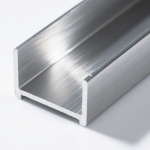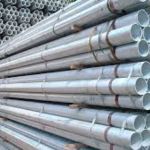The pharmaceutical industry, with its stringent requirements for purity, safety, and regulatory compliance, demands materials of the highest integrity. Among these, 316L stainless steel pipes stand as a cornerstone for fluid handling systems, playing a critical role in everything from active pharmaceutical ingredient (API) production to sterile water for injection (WFI) distribution. Its superior corrosion resistance, hygienic properties, and robust mechanical characteristics make it the material of choice for applications where product purity and system longevity are non-negotiable. This article delves into the specific attributes of 316L stainless steel pipes, the crucial compliance standards, essential cleaning protocols, and strategies for maximizing their operational lifespan within pharmaceutical environments.
Why 316L Stainless Steel Reigns Supreme in Pharmaceuticals
The “L” in 316L denotes a low carbon content (0.03% maximum), which is paramount for preventing carbide precipitation during welding. This phenomenon, known as sensitization, can lead to intergranular corrosion, compromising the pipe’s integrity. Beyond this, 316L offers several compelling advantages:
- Exceptional Corrosion Resistance: With the addition of molybdenum (2-3%), 316L exhibits enhanced resistance to pitting and crevice corrosion, particularly in chloride-rich environments often encountered in cleaning agents and process fluids.
- Hygienic Properties: Its smooth, non-porous surface, especially when polished, resists bacterial adhesion and biofilm formation, facilitating effective cleaning-in-place (CIP) and sterilization-in-place (SIP) processes.
- Non-Reactivity and Product Purity: 316L is largely inert, meaning it will not leach contaminants into the product or react with sensitive pharmaceutical compounds, thereby maintaining product purity and integrity.
- Durability and Mechanical Strength: Capable of withstanding high pressures and temperatures, 316L pipes offer excellent mechanical properties, ensuring long-term operational reliability.
Navigating Compliance: The Regulatory Landscape
Compliance is the bedrock of pharmaceutical manufacturing. For piping systems, adhering to globally recognized standards is not just a recommendation but a mandate. The most prominent standards include:
ASME BPE (BioProcessing Equipment)
ASME BPE is the preeminent standard for the design and fabrication of equipment used in biopharmaceutical and pharmaceutical processing. It specifies critical parameters for 316L stainless steel pipes, including:
- Surface Finish (Ra): Defines the roughness average, with specific requirements for product contact surfaces (e.g., SF1, SF3, SF4 for various degrees of mechanical or electropolished finishes). Smoother surfaces (lower Ra values) are crucial for preventing microbial adhesion and ensuring efficient cleaning.
- Material Traceability: Mandates complete documentation of material sources, heat numbers, and manufacturing processes, ensuring full accountability from raw material to finished pipe. This is vital for validation and recall procedures.
- Weldability and Design: Specifies requirements for orbital welding, minimizing dead legs, and ensuring proper drainability to prevent stagnant pockets where bacteria can proliferate.
cGMP (Current Good Manufacturing Practices)
While not a prescriptive engineering standard, cGMP principles heavily influence the design and operation of pharmaceutical piping systems. They mandate that systems are designed, constructed, and maintained to prevent contamination and ensure product quality. This includes:
- Use of appropriate materials (like 316L) to prevent reactivity and adulteration.
- Facilitating easy and effective cleaning and sanitization.
- Proper validation and qualification of installation and operational procedures.
FDA and USP
The U.S. Food and Drug Administration (FDA) provides overarching regulations, while the United States Pharmacopeia (USP) sets standards for the identity, strength, quality, and purity of medicines, food ingredients, and dietary supplements. Piping materials must comply with FDA guidelines for materials in contact with drugs and USP requirements for water quality (e.g., USP Purified Water, Water for Injection), which directly impacts the selection and maintenance of 316L piping.
The Significance of Surface Finish
The internal surface finish of 316L pharmaceutical pipes is perhaps the single most critical factor influencing hygiene and cleanability. Measured as Ra (Roughness Average), a lower Ra value indicates a smoother surface. For pharmaceutical applications, typical Ra requirements range from 0.5 µm (20 µin) down to 0.25 µm (10 µin) or even lower for critical applications like WFI systems.
| ASME BPE Surface Finish Spec. | Typical Ra Value (µin/µm) | Processing Method | Application Example |
|---|---|---|---|
| SF1 (Mechanically Polished) | 30/0.75 or 20/0.5 | Mechanical Polishing | General process lines, non-critical contact |
| SF3 (Electropolished over SF1) | 20/0.5 or 15/0.38 | Mechanical Polishing + Electropolishing | API manufacturing, buffer preparation |
| SF4 (Electropolished over a finer SF) | 10/0.25 or 5/0.13 | Fine Mechanical Polishing + Electropolishing | WFI, purified water, sterile product transfer |
Electropolishing creates a chromium-rich, smooth, and passive surface. This not only enhances corrosion resistance but also dramatically reduces the surface area available for microbial attachment, making the pipes easier to clean and sterilize, thereby ensuring superior product quality and safety.
Design, Fabrication, and Installation Considerations
The design and fabrication of pharmaceutical piping systems are as critical as the material itself. Poor design or execution can negate the benefits of 316L. Key considerations include:
- Minimizing Dead Legs: Sections of piping where flow is stagnant can become breeding grounds for microorganisms. Strict limits on dead leg length (e.g., 2D for BPE) must be adhered to.
- Proper Sloping for Drainability: All horizontal piping runs must be sloped (e.g., 1/8 inch per foot) to ensure complete drainage, preventing pooling and microbial growth.
- Orbital Welding: This automated welding technique ensures consistent, high-quality, crevice-free welds with full penetration, minimizing heat tint and defects that could compromise hygiene.
- Joints and Connections: Tri-clamp connections with appropriate gasket materials (e.g., EPDM, PTFE, Silicone) are preferred for their ease of assembly/disassembly, cleanability, and minimal risk of leaks.
At BaoLi Iron & Steel Co.,Ltd, we understand these critical design and fabrication nuances. Our commitment to quality extends beyond just supplying premium stainless steel pipes; we offer technical support to ensure our products integrate seamlessly into high-purity systems, meeting bespoke requirements for size, specification, and performance.
Cleaning, Passivation, and Maintaining Longevity
Even the best 316L stainless steel pipes require rigorous cleaning and maintenance to ensure their longevity and performance.
Initial Cleaning and Degreasing
Post-fabrication, pipes may contain residues like lubricants, welding fluxes, scale, and iron particles. Thorough cleaning with appropriate detergents removes these contaminants, preventing future corrosion and ensuring a truly clean surface for subsequent steps.
Passivation: Restoring the Passive Layer
Stainless steel forms a passive chromium oxide layer on its surface that provides its inherent corrosion resistance. Fabrication processes, especially welding, can damage this layer or embed free iron, which is susceptible to corrosion. Passivation is a chemical process that removes free iron and other foreign materials from the surface of the stainless steel and promotes the formation of a uniform, coherent, and highly protective passive layer.
- Nitric Acid Passivation: Traditional method, effective but requires careful handling due to its corrosive nature.
- Citric Acid Passivation: An increasingly popular and environmentally friendlier alternative that offers comparable performance with fewer safety and disposal concerns.
Proper passivation ensures the pipes remain highly resistant to corrosion and maintain their hygienic qualities throughout their operational life.
Routine Cleaning and Maintenance
Regular CIP/SIP cycles are standard in pharmaceutical operations. These automated cleaning and sterilization processes utilize detergents, sanitizers, and high-temperature steam to remove product residues and eliminate microbial contaminants. Consistent adherence to these protocols, combined with periodic visual inspections and potential re-passivation, ensures the long-term performance and compliance of 316L pharmaceutical piping.
Choosing a Reliable Partner for Your Piping Needs
The reliability of your 316L stainless steel pipes directly impacts patient safety and operational efficiency. Partnering with a manufacturer that prioritizes quality, traceability, and customer satisfaction is paramount. BaoLi Iron & Steel Co.,Ltd stands as a leading Chinese steel manufacturer, committed to being a trustworthy partner for global clients.
We specialize in a comprehensive range of steel products, including high-purity stainless steel (such as bright pipes and plates) essential for the pharmaceutical industry. Our core capabilities extend to carbon steel and galvanized steel for diverse industrial applications, offering flexibility and a one-stop solution for various project requirements. We pride ourselves on:
- Customization: Tailoring steel dimensions, specifications, and performance to meet specific client needs.
- Technical Expertise: Our experienced team provides invaluable guidance on material selection and application.
- Rigorous Quality Control: Ensuring our products meet the highest industry standards, aiming for “100% customer satisfaction.”
- Global Service: Providing comprehensive support from production and transportation to contract management worldwide.
Conclusion
316L stainless steel pipes are indispensable for maintaining the sterile and pure environments demanded by the pharmaceutical industry. Their inherent properties, coupled with strict adherence to standards like ASME BPE and cGMP, proper design, meticulous fabrication, and diligent cleaning and passivation, ensure product integrity and operational longevity. By choosing a reputable supplier like BaoLi Iron & Steel Co.,Ltd, pharmaceutical manufacturers can secure the high-quality stainless steel piping solutions necessary to meet the industry’s rigorous demands and contribute to global health and safety. Our focus on customer-centricity, professionalism, and reliability makes us an ideal partner for your next pharmaceutical piping project.






